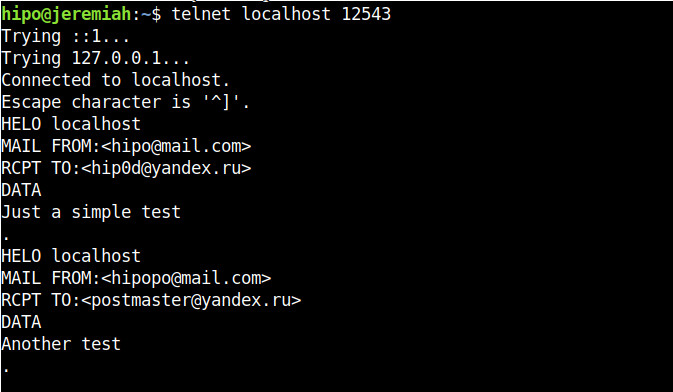

- #BASH NETCAT PORT CHECK HOW TO#
- #BASH NETCAT PORT CHECK INSTALL#
- #BASH NETCAT PORT CHECK UPDATE#
- #BASH NETCAT PORT CHECK DOWNLOAD#
The NGINX command is also used to monitor the networking system of your Linux. $ netstat -listen $ netstat -lntu $ netstat -vaun Finally, we have one command that can find open ports in Linux by netstat. The netstat command can display both receiving and sending end transmission data. If you want to check only the UDP User Datagram Protocol ports, you can also use the network statistics or netstat command. Finding Open Ports Using netstat Command in Linux Or, if you are the client, you have access to the localhost you can run the second terminal command too. Now you can run the following terminal command to create a TCP connection. Let you want to create a connection under a TCP protocol where the port is assigned as 2389. And I must say that in Linux, the netcat is the most powerful weapon to check network sockets.

In the Ubuntu server, this kind of networking operations is done by using the nc or netcat command.
#BASH NETCAT PORT CHECK HOW TO#
Now we will see how to check the available number of ports using the User Datagram Protocol (UDP). Previously we have seen how to check available ports using Transmission Control Protocol. Finding Open Ports Using netcat Command in Ubuntu The namp command is also used for finding the available ports for a particular IP Address. We can also find the Transmission Control Protocol (TCP) ports using the nmap command. Most of the time, the localhost IP address is assigned by 127.0.0.1
#BASH NETCAT PORT CHECK INSTALL#
$ sudo apt-get install nmap $ nmap -versionĪfter the nmap is installed, at the very first step, we can check the ports of our localhost address. You can also check the version of your network mapper. If your Linux system doesn’t have nmap installed, for Ubuntu and other Linux versions, you can install nmap by the following terminal commands. In Linux, Network Mapper or nmap command is used for checking the status of a system, used devices, checking current network services, and the availability of socket or ports. Checking Open Ports Using nmap Command in Linux In the entire post, we cover up the method of how to check open ports in Linux as well as in Ubuntu.ġ. Most of the time, FTP servers are made with Apache Ubuntu server tools, where ports are kept open and associated with IP addresses.
#BASH NETCAT PORT CHECK DOWNLOAD#
The internet service provider(ISP) often allows its users to download movies of games from their File Transfer Protocol (FTP) server. For Gmail, the default SSL or port is 465. We know that SSL (Secure Sockets Layer) is a socket number used for identification and security purpose.

Let, we want to send an email from our Gmail account in this case, Gmail uses the SMTP (Simple Mail Transfer Protocol) system. In computer networking, we all are familiar with the concept and types of networking addresses like physical address and local address.Įvery networking address has an endpoint that defines the work-type of that network address. Let your network address followed by a 16-bit socket, then the total number of available ports will be 2^16= 65536. So similar steps must be repeated to open the same port again after a restart.Network ports are usually allocated just after the IP address.
#BASH NETCAT PORT CHECK UPDATE#
The approach presented in this article will only temporarily update the firewall rules until the system shuts down/reboots. This simulates such environments in a simple command.īut this is only temporary, as the changes will be reset every time we reboot the system. This is the reason why nc is such a useful tool. Similarly, telnet won’t work either, since it also needs a listening application to bind to. If you don’t use any listening application such as netcat, this will display the port 4000 as closed, since there isn’t any application listening on that port currently. NOTE: nmap only lists opened ports which have a currently listening application. Indeed, our port has been opened! We have successfully opened a new port on our Linux system!


 0 kommentar(er)
0 kommentar(er)
